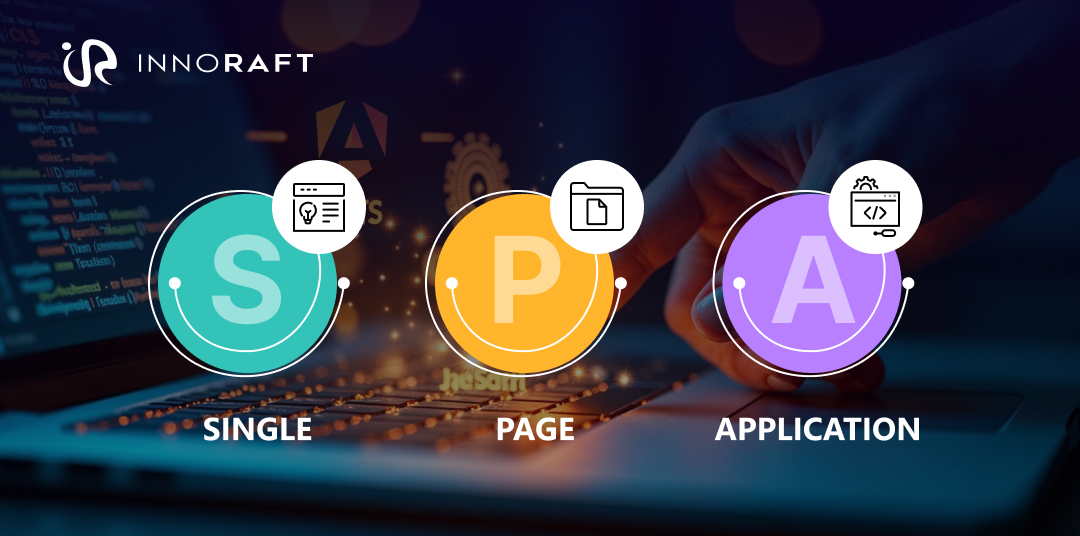Whenever a user interacts with a website in traditional web applications, the server returns a new HTML page to the browser. This causes slow processing and may result in a bad customer experience. A Single-page application Angular loads all the required resources or assets, and information into a single page, and all interactions and responses happen in a quicker and responsive time. SPAs load a single HTML page and keep updating the contents as per the user's interactions with the application, thereby minimizing the need for a whole page reload.
Angular is the next best thing in developing SPAs, given how sophisticated it is as a JavaScript framework developed by Google. Angular development offers developers the power to build scalable, efficient, and dynamic web applications.
Why Angular Single-Page Applications Are a Wise Choice?
Being a complete SPA framework, Angular covers everything from managing dynamic content to smooth Angular routing. Since it is based on the component architecture, Angular single-page applications enable developers to create reusable and maintainable code so that they can scale the applications as complexity and user load increase.

Why is SPA Architecture in Angular Ideal for Web Apps?
When building SPAs with Angular, the framework offers extensive tools and features that ensure excellent speed, scalability, and maintainability. It is best suited for SPAs due to its robust SPA architecture in Angular, modularity, and effective dynamic content management.
The following are some of the most notable features that support Angular scalability and performance.
- Two-way Data Binding: This ensures that the model (data) and the view (UI) synchronize automatically. Changes to the data are promptly reflected in the UI, and vice versa. This dynamic updating approach dramatically enhances the responsiveness of a single-page Angular application.
- Angular Routing: Efficient navigation is an essential component of any SPA. The Angular routing module makes it possible to link URLs to components so that there are smooth transitions between views without full-page reloading. This enhances speed and user experience.
- Component-based Architecture in Angular: Angular's component-based structure architecture divides the app into separate, reusable components, like logic, templates, and style. This makes the application modular and maintainable and enables Angular scalability as the project grows—key to successful SPA architecture in Angular.
- Angular Modular Design: The Angular module design promotes separation of responsibilities by separating the application into modules based on features. This enhances code maintainability and supports techniques like lazy loading to improve performance.
- Dependency Injection: The dependency injection system integrated into Angular facilitates the effective management of service and component dependencies. This leads to cleaner, more tested, and more maintainable code, which is great for large-scale SPAs.
- RxJs and Observables: Angular manages asynchronous data streams with RxJS, making managing events like API responses and user interactions simpler. This dynamic programming approach matches the real-time requirements of modern Angular single-page applications.
- Directives and Templates: Angular offers an extensive set of directives that allow developers to enhance HTML capabilities. This feature, with its extensive templating capabilities, is critical for generating dynamic, interactive user interfaces in SPAs.
Benefits of Building SPAs with Angular for Scalable Web Apps
An Angular single-page application presents a new paradigm for web development through dynamic and highly responsive user interfaces. Angular framework provides fundamental features such as component-based architecture, modular design, and advanced Angular routing, making it a great choice for building SPAs with Angular.
Enhanced Customer Experience
SPAs load content dynamically, eliminating full-page reloads and providing easy navigation between sections. Angular performance optimization techniques, like lazy loading, render apps even more responsive, providing a faster, more uninterrupted experience with less delay and interruptions.
Lowered Server Usage
A single-page application Angular setup retrieves just the data and components required, rather than fetching whole pages from the server. This minimizes HTTP requests, bandwidth consumption, and server processing time, resulting in more efficient and cost-effective processes.
Comprehensive Mobile Experience
Angular's responsive UI capabilities enable SPAs to transition smoothly across various screen sizes and devices. Angular's architecture ensures that mobile customers experience the same smoothness as desktop customers, raising customer satisfaction across all platforms.
Better Maintenance
Angular's component-based architecture and modular nature ease the maintenance and expansion of SPAs. Different components can be developed independently by developers without impacting the overall application—-key to sustainable SPA architecture in Angular.
Rapid Development Process
Angular speeds up SPA development with provisions such as built-in routing, dependency injection, and two-way data binding. These provisions reduce duplicate efforts and make development simpler, such that teams are able to create complicated applications quickly without compromising quality.
Crucial Factors for SPA Architecture in Angular Applications
Developing a single-page Angular application involves careful design and execution to ensure performance, scalability, and a positive user experience.
The following are crucial factors to bear in mind:
State Management
As SPAs constantly change content without requiring full page reloads, controlling application state becomes more difficult. Angular offers scalable state management using libraries like NgRx, which helps to maintain a predictable and centralized state architecture—essential for Angular scalability as the application expands.
SEO Optimization
One typical issue with SPAs is ensuring visibility in search engine results, since conventional SPAs lack server-side content. To address this, Angular offers Angular Universal for server-side rendering (SSR), which improves the SEO and accessibility of your Angular single-page applications to search engines.
Lazy Loading
Lazy loading in Angular enables developers to load only the essential modules during the first load and delay the rest when required. This significantly increases Angular performance optimization, decreases bundle size, improves user experience, and is a best practice when building SPAs with Angular.
Error Management
Proper error handling is essential in an Angular single-page application, as one failure can have serious implications. Angular comes with built-in error handling features and services that allow you to catch, log, and respond to issues gracefully, so that users can interact with the app without interruption.
Performance Enhancement
Angular performance optimization encompasses various solutions, including caching, lazy loading, and code separation. Together, these techniques improve responsiveness and ensure that even feature-rich applications can manage enormous datasets with ease and efficiency.
Conclusion
Angular's profound features, such as component-based architecture, two-way data binding, and robust routing capabilities, make it a good choice for creating Angular single-page applications. Whether you're building from scratch or scaling an existing platform, building SPAs with Angular ensures responsive design, maintainability, and performance.
SPA architecture in Angular continues to evolve, helping developers deliver faster and user-friendly web apps. Are you ready to improve your web development efforts with Angular? Contact Innoraft today to elevate your SPA strategy.
FAQ
Frequently Asked Questions
Didn’t find what you were looking for here?
